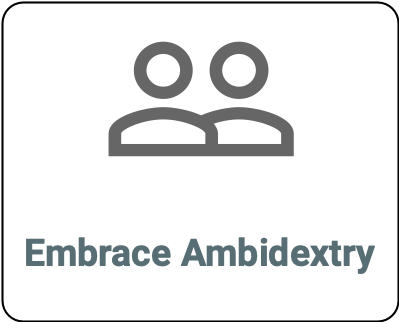Ambidextry simultaneously pursues exploration and exploitation in order to succeed in the short and long term.
Organizational ambidextry, as an independent subject area in business administration, is located in the field of organizational theory and can be viewed from the perspectives of organizational learning, technology management, strategic management, change management and knowledge management.
Wikipedia Tweet
Organizational ambidexterity is one of the most important characteristics of high-performing companies and it helps to survive in dynamic markets.
Companies operating in organizational ambidextry seek to balance value creation and explore new potential. Two variants can be found in the concrete implementation in everyday life.
- Contextual ambidextry: different organisational factors (e.g. leadership, values, norms, etc.) are applied dynamically, i.e. situationally depending on the task. An example of contextual ambidextry was Google’s 80/20 rule, which stated that Google employees should spend 20% of their working time on innovative topics that have nothing to do with day-to-day business.
- Structural ambidextry: Exploitation and exploration are implemented with the help of dual structures in the company. For this purpose, differentiated organisational units are created, each dealing with replication (exploitation) and innovation (exploration). This is the ideal application model for the three horizons concept.
Many practices of agility and new work provide an important approach and pay off in promoting ambidextrous structures. They help to avoid the challenges of a classic organizational structure.
